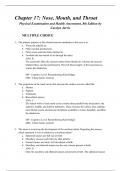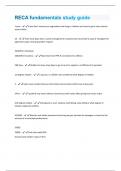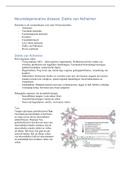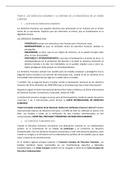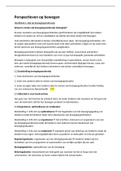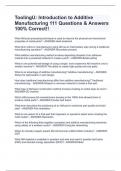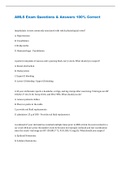Tentamen (uitwerkingen)
Chapter 17: Nose, Mouth, and Throat Physical Examination and Health Assessment, 8th Edition by Carolyn Jarvis
- Instelling
- Physical Examination And Health Assessment
Physical Examination and Health Assessment, 8th Edition by Carolyn Jarvis MULTIPLE CHOICE 1. The primary purpose of the ciliated mucous membrane in the nose is to: a. Warm the inhaled air. b. Filter out dust and bacteria. c. Filter coarse particles from inhaled air. d. Facilitate the...
[Meer zien]
